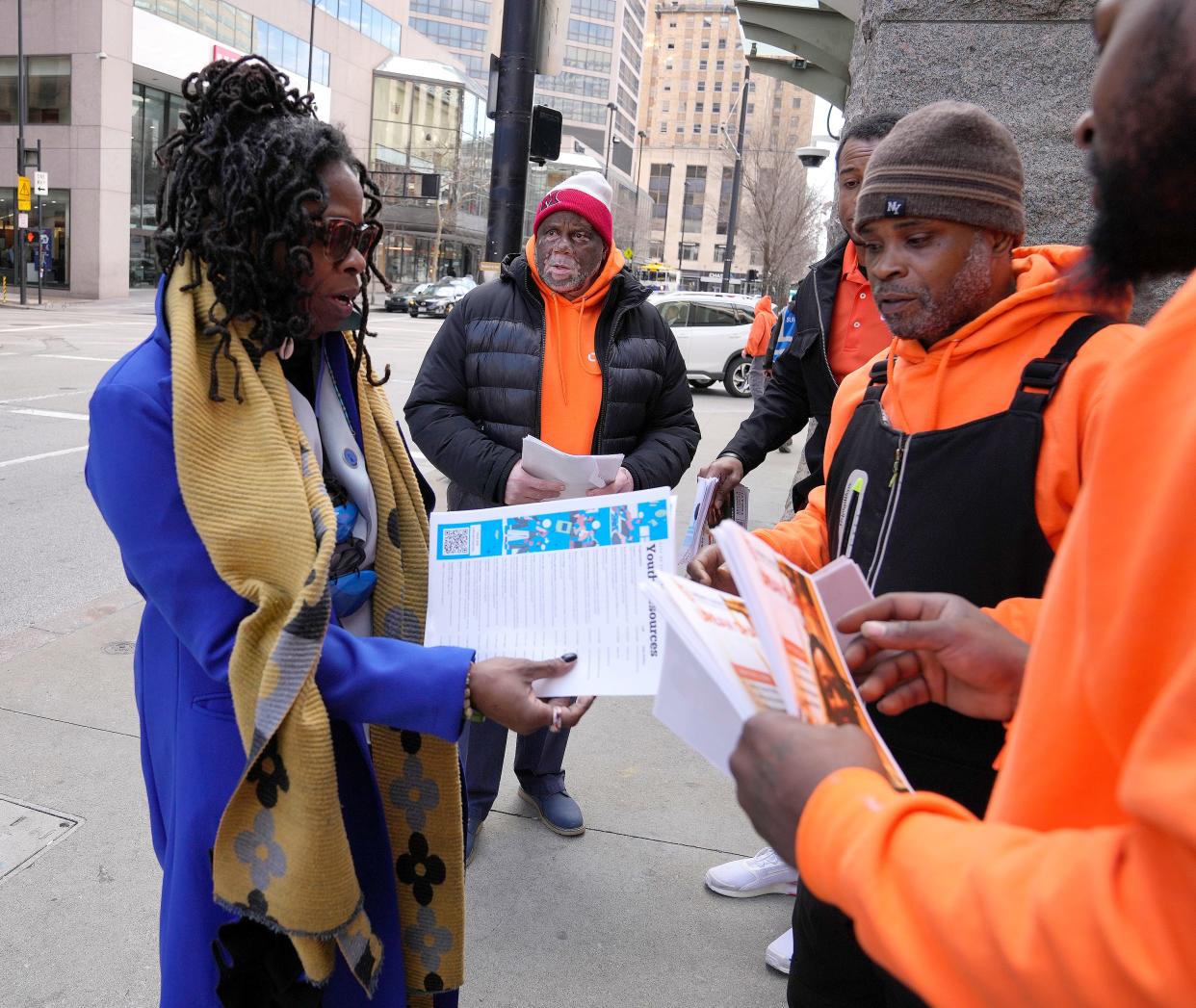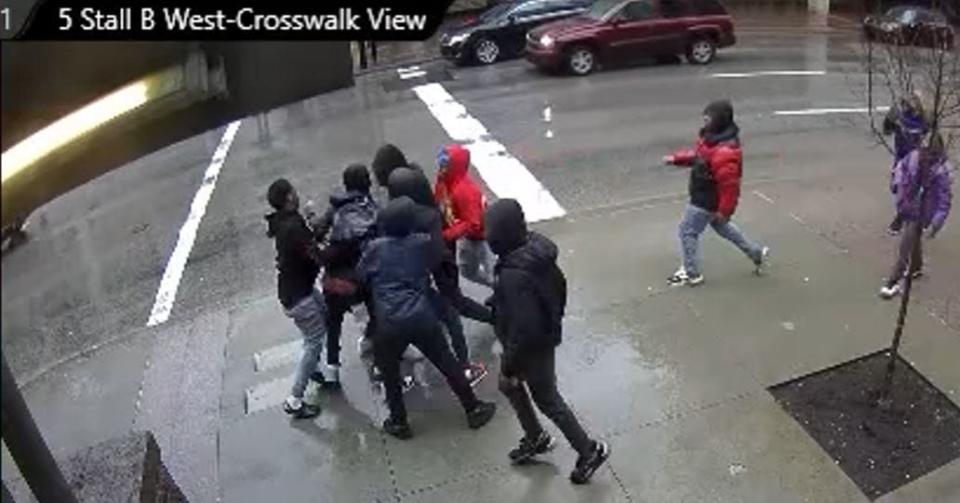From the editor: How we approached our reporting on teens attacking people Downtown

Is it safe to go Downtown?
Statistically, the answer is yes. As The Enquirer reported last year as part of our Future of Downtown series, the number of violent crimes in Cincinnati is at its lowest level in more than a decade. But statistics don’t necessarily make us feel safer, especially when surveillance videos capture acts of random, senseless violence like we saw at the end of January.
Two assaults committed by groups of teens occurred within a block of each other near Government Square, the Downtown transfer hub for Metro buses. In the first incident, a video posted on social media by the Cincinnati Fraternal Order of Police showed about eight teens tackling and kicking a man. A similar incident occurred the following day, captured in a surveillance video released by the Cincinnati Police Department.
The attacks were widely reported by local media, and rightfully so. The videos are shocking to watch, and the questions they raise are serious. Why are teens acting this way? Who or what is to blame? What’s being done about it?
Is it safe to go Downtown?
I thought I would share with you how we approached this story, which at first blush seemed almost too large to wrap our arms around. But as the saying goes, you eat an elephant one bite at a time.
The easy part is keeping up with developments. We reported that arrests were made, and that Mayor Aftab Pureval said more police officers would be present near Government Square. Police Chief Teresa Theetge called on parents to step up. “You must know where your children are and who they associate themselves with,” she said.

But we strive to go beyond the headlines. Our job is to add context and nuance, and in our news meetings we talked about how to break the issue down into its key components.
One angle that emerged is the transportation plan for Cincinnati Public Schools, which relies on the Metro bus system instead of district-owned yellow school buses that ideally would take kids from a bus stop near their home directly to school and back. The plan, designed to cut costs in the financially strapped district, has its critics. But how big of a factor is it to unruliness? Our education reporter, Madeline Mitchell, dug in and learned that of the 9,000 students with Metro passes, 200 are required to transfer at Government Square.
The transportation angle came up again in a story by our public safety reporter, Cameron Knight. Through his work, we learned that Dohn Community High School, a charter school system with a location downtown, had spent $400,000 on used Metro buses to transport its students independently to avoid the Government Square transfer. But the Ohio Department of Education and Workforce shut down Dohn’s bus operation because it wasn’t in compliance with state law.
On a more uplifting note, our reporting spotlighted the outreach efforts organized by Iris Roley, whom the city hired in 2022 as a consultant on community policing standards that are part of the city’s Collaborative Agreement. Volunteers from groups including The Urban League, 3CDC, Talbert House and the Cincinnati Public Schools Board of Education have been at Government Square, engaging teens and providing information on job programs and other ways to break the cycle of poverty and violence.
"They didn't create these issues," Roley told Enquirer reporter Bebe Hodges, "They were born into it."
Providing this insight through reporting that focuses on not only the problems but solutions, as well, defines our approach to local journalism.
•••
I heard an interesting story on NPR’s Morning Edition, aired locally by Cincinnati Public Radio’s WVXU-FM. It talked about the growing backlash against the algorithms that shape what we consume online, be it movies, music, or – of particular interest to me – news and information.
One of the people interviewed in the story was journalist Kyle Chayka, author of a new book titled "Filterworld" that examines the effects of algorithms on our culture.
“We've just been so overexposed to recommendations and manipulated so much by these feeds that we've realized they're not actually delivering what we want,” Chayka said.
So what are we to do? One quick fix for news consumers is to stop relying exclusively on social media. Instead, go straight to the source and see what editors and producers have curated as the most important or interesting stories of the day. Go to multiple sources, in fact, and take advantage of the serendipity absent from your Facebook or X feed.
Web analytics tell us that roughly 65 percent of our audience engages with us at the article level through search or social media, bypassing the Cincinnati.com home page completely. If that describes your online habits, I’d encourage you to free yourself from your news algorithm and see the stories you’re missing.
Enquirer Executive Editor Beryl Love writes a biweekly column that takes you behind the scenes at The Enquirer. Occasionally, he shares his thoughts on local issues, particularly as they pertain to a free press and open government. Love also serves as regional editor for the USA TODAY Network Ohio. Email him at blove@enquirer.com. He can’t respond personally to every email, but he reads them all.

This article originally appeared on Cincinnati Enquirer: Editor Beryl Love column on attacks by teens in Downtown Cincinnati

